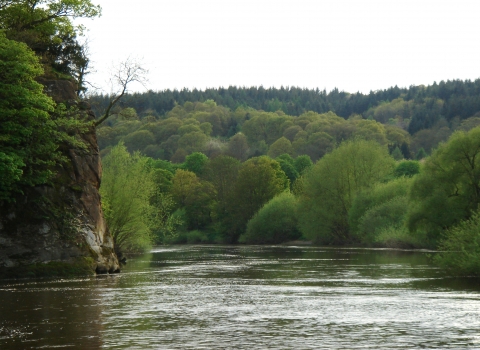From the mighty River Severn to the tiniest farm ponds, Worcestershire has some fantastic wetlands. Sadly, the county has lost large areas of wetland habitat due to drainage, over-abstraction of groundwater and physical modification of rivers and streams. We are working with partners to protect what remains and create new areas for the future.
Our work in Worcestershire complements the work undertaken by Wildlife Trusts across the UK in helping to create living seas.
Why are wetlands so important?
Wetlands are incredibly important for people and wildlife. Mismanaged or ignored they can pose a real risk to individuals and the economy as the large floods of 2001, 2007 and 2014 demonstrated so starkly in Worcestershire. However, wildlife-rich and sensitively managed wetlands can deliver significant benefits to society and are home to some of our most iconic species.
- Wetlands capture rainwater and release it slowly. This allows groundwater systems to refill and stabilise water flows in rivers and streams, reducing both drought and flood risks. Increased and often intensive drainage of land means that water rushes straight off into rivers, causing them to flood more heavily and frequently.
- Wetlands can change rapidly according to how much water they receive. This means the number and variety of species that inhabit them can also change quickly; making them exciting places to visit. They support a rich biodiversity including everything from fish to damselflies and otters to birds.
- With the loss of wetland habitats has come dramatic reductions in the wildlife that relies on them including populations of birds like snipe, curlew and lapwing. Figures from the most recent 'Birds of Conservation Concern' list indicate that lapwing have declined by 63%, curlew by 62% and snipe by 44%.
- Wetlands are not only great for supporting a range of existing wildlife; they’re also essential for helping wildlife adapt to future climate change. By ensuring the existence of a network of wetlands, we can help wildlife move through the countryside as changes occur.
A Catchment Based Approach (CaBA)
It’s important to look at the big picture - a single intervention will reap only a fraction of the rewards when considered against restoring a whole catchment. Each wetland creates a mosaic across a landscape; together they provide networks and corridors that wildlife, and water, can move through safely.
Working at a catchment scale, therefore, is at the core of effective landscape conservation. It allows us to consider diverse problems like pollution from agriculture and road run-off, watercourse management and habitat enhancement at the scale required to make a real difference to wetland wildlife. It also means that we can communicate with a broad range of public bodies in partnership to deliver the most effective use of funds and identify key issues in our area. Worcestershire Wildlife Trust co-hosts the Worcestershire Middle Severn Catchment Based Approach (CaBA) partnership, which exists to identify these issues, deliver projects for the benefit of the water environment and review the effectiveness of these interventions.
For more information on our work as part of the CaBA partnerships and to find out how you can get involved you can visit our page on the CaBA website or contact our Catchment Partnership Agricultural Advisor, Emily Williams
Our wetland work
The Trust has a long history of working to protect and enhance wetlands. We manage our own wetland reserves (for example Upton Warren, Feckenham Wylde Moor and Ipsley Alders Marsh), champion wetland protection through the planning system and work with landowners and partner organisations to deliver wetland habitat on farmland across Worcestershire.
As well as the CaBA approach outlined above we are currently engaged in the Severn Trent Environmental Protection Scheme (STEPS) and the Water Environment Grant (WEG), both of which are delivering benefits for wetland wildlife on farmland and delivering improved water quality and flow control through influencing sustainable drainage in new developments. Previous projects include extensive work on the Bow Brook and on urban watercourses through Love Your River Bromsgrove.
Wetland Advice
Sadly we don't always have time to offer bespoke advice to people interested in creating and managing wetland habitats. The links below offer some useful guidance and offer more information on watery subjects.
- Transference of diseases and pests from one water body to another is a huge problem for wetland wildlife. The Environment Agency's advice on minimising the risk of moving problem species and diseases around is must-read information for everyone involved in wetlands. You can find out more on the Agency's Check, Clean, Dry webpage.
- If you'd like to help wetland wildlife in your own garden why not build a pond? More advice is also available in our Ponds for All booklet and from the Freshwater Habitats Trust 'Pond Clinic'.
- If you notice pollution in a river or pond please notify the Environment Agency.
- If you want to find out more about the rivers and lakes in your area why not check out the CaBA Data Explorer?

